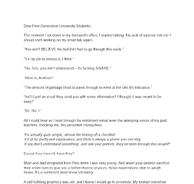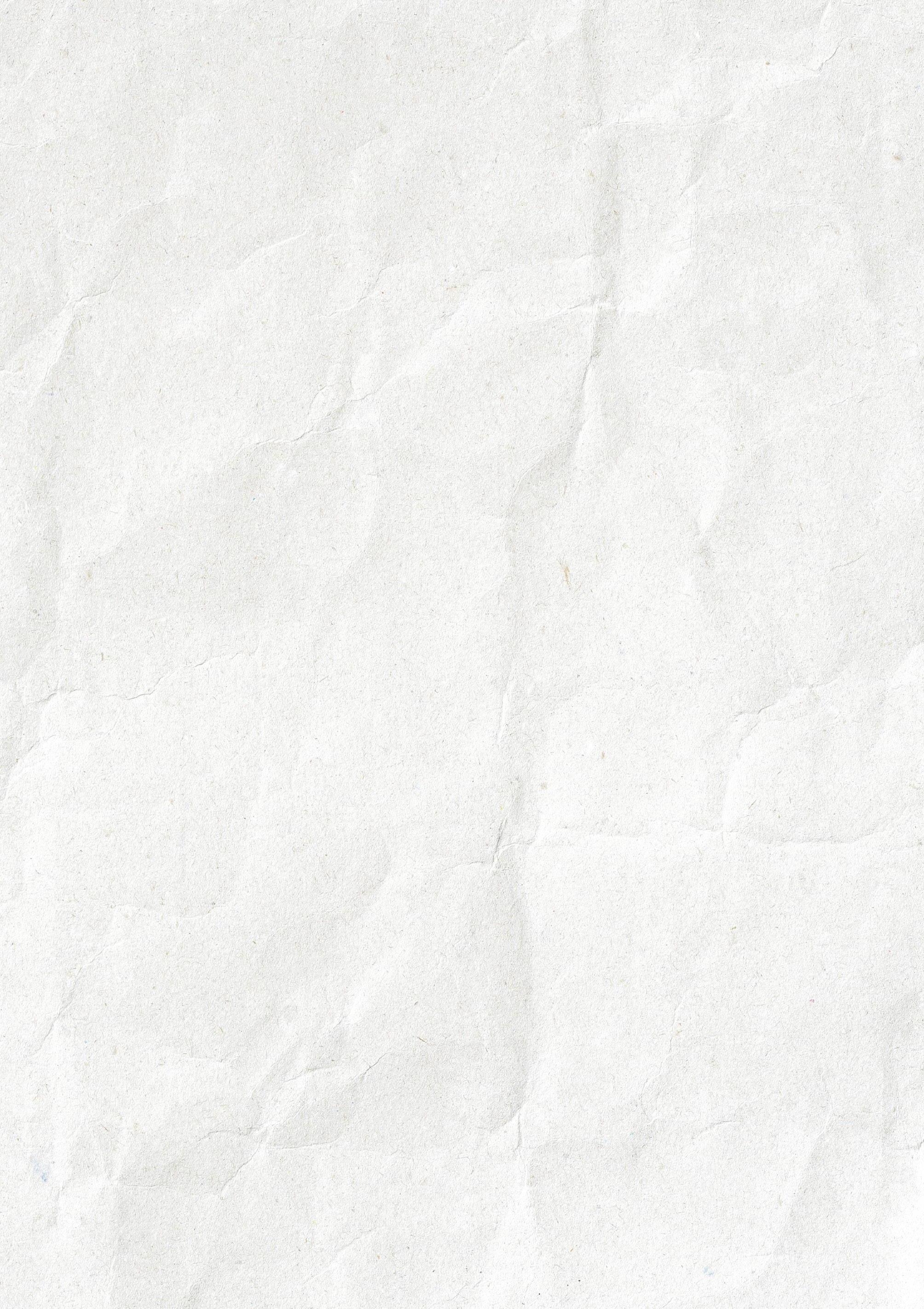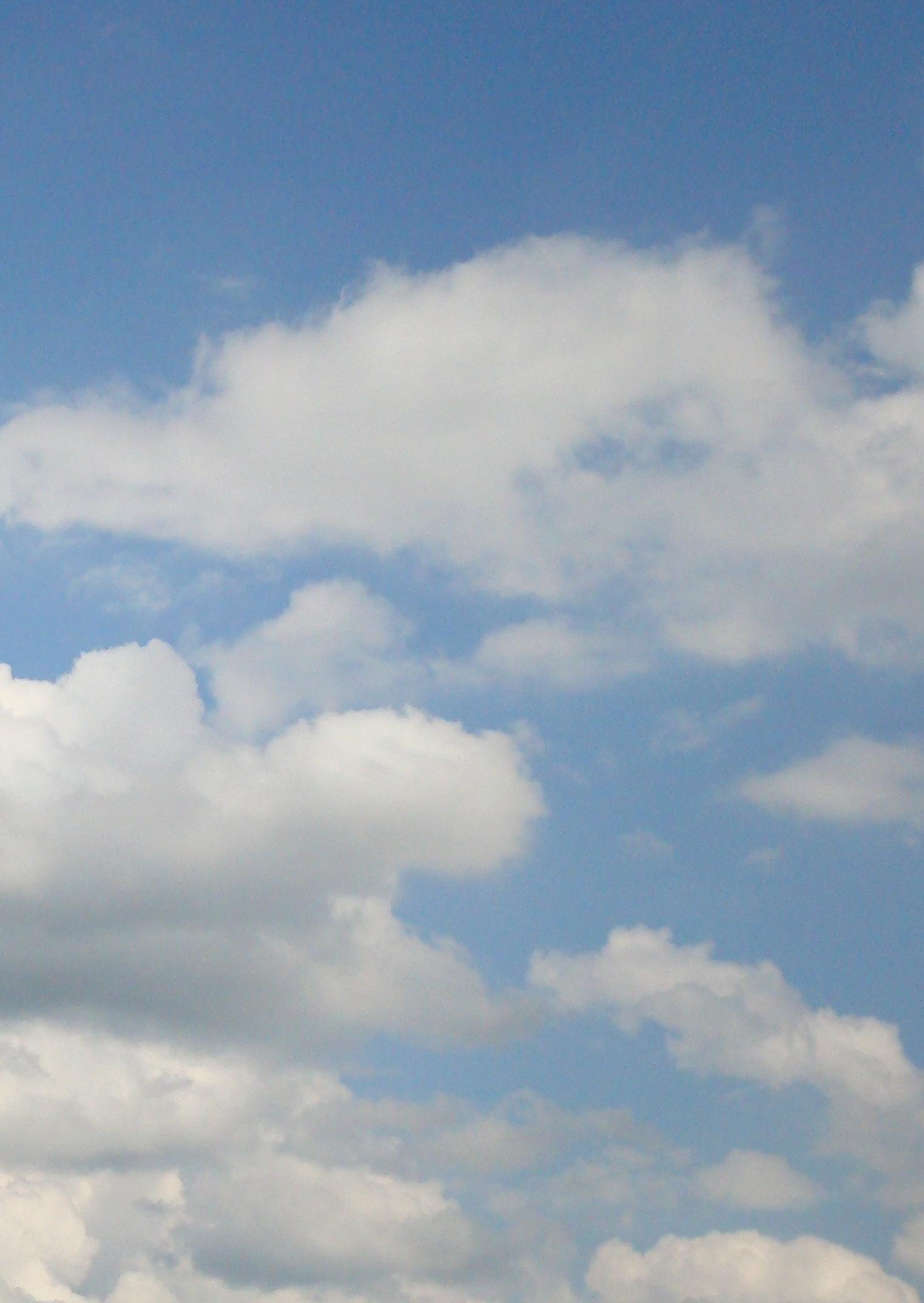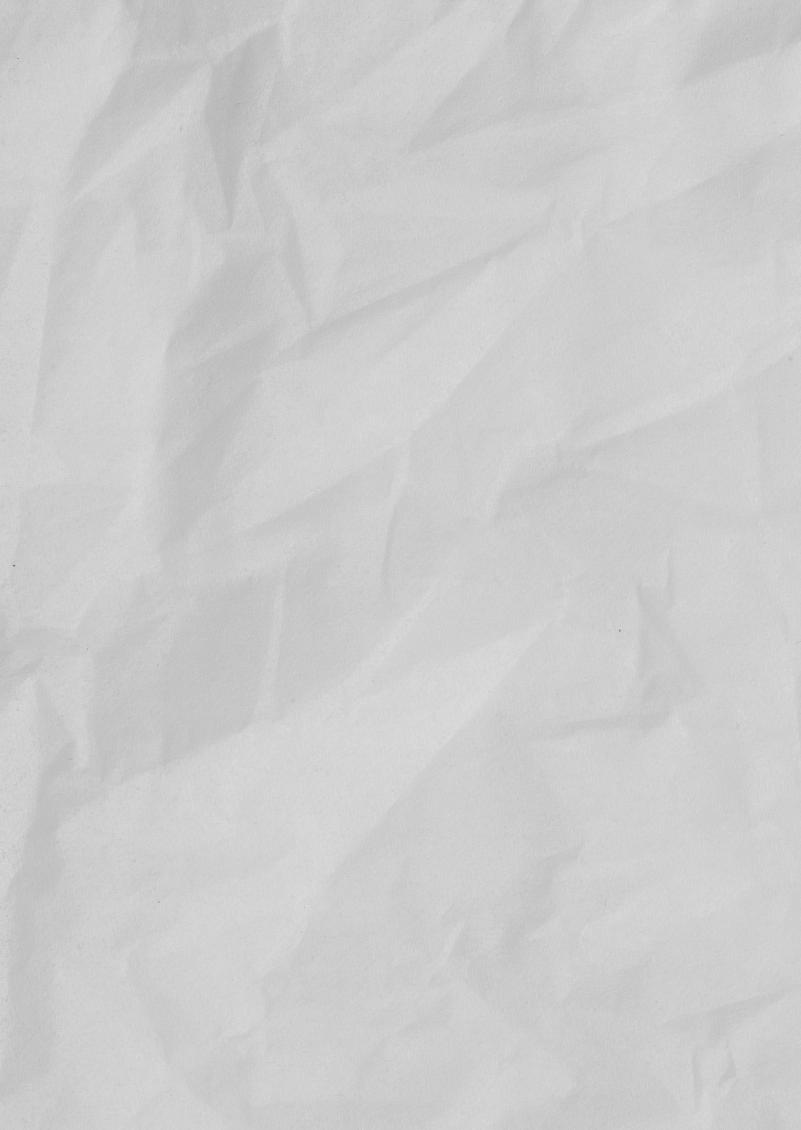ISSUE 91.3


Joining a club is one of the best ways to find friendship and fulfillment on campus.
Head to youx.org.au/clubs to find the complete list of our YouX Clubs and their preferred contact.
youx.org.au/clubs



ISSUE 91.3


Joining a club is one of the best ways to find friendship and fulfillment on campus.
Head to youx.org.au/clubs to find the complete list of our YouX Clubs and their preferred contact.
youx.org.au/clubs


Thank you for supporting On Dit. This would not be possible without you.
Kathers Anderson
Louise Jackson
Sebastian Andrew
Sienna Sulicich
Cover Art




SIENNA SULICICH REFERENCE PIC ig: lilycarmexi
Graphic Design
Sienna Sulicich
Lily Baxter
SAbrina donato
Art
Sienna Sulicich - @sennanicpics
Arantza Garcia - @ari_garcia0
Lily Baxter - lilymaya.bigcartel.com
Charlotte Joyner
Katelyn Jardine
Tisha Gaufo
JoHN T.
Annabel Fedcesin
Rose Kim
Angus Withers
Isaac Nakone
Johnathon Bailey
Emily Miller
Keziah Kapetanos
Asirah Abdul KaDir
Tisha GAUFO - @theintrovertedcollective
Isobella Mulrooney - @bella+_Illustrates
We want to acknowledge that the University of Adelaide’s On Dit is written and created upon Kaurna land. The Kaurna People are the traditional custodians of the Greater Adelaide Plains and their culture, knowledge, and spiritual connections continue to run deeply within this Country. We acknowledge that the University of Adelaide is a place of learning attended by First Nations People from around the continent and, like Kaurna, their land and sovereignty was never ceded. We pay our deepest respects to the Elders of the past, present, and emerging.




Hi, Seb here. Long time contributor. First time editorial. I mean, author of an editorial.

I am not an editorial.
To cut right to the point – I overthink a lot. I can’t remember exactly when my overthinking reached borderline toxic levels, only that it wasn’t always like this. What’s spurred it on? The fear of peers masking deep resentment? The desperation to avoid any mistake at the risk of displeasing someone? The inability to accept that things are fine, and having to fill my subconscious boredom by imagining all the ways in which a simple task – be it texting a friend, sending a work email, going for a drive – could go spectacularly wrong.
Trying to figure out a topic for this editorial got me overthinking. I couldn’t figure out what I wanted to write – only how bad anything I might write would turn out. Even now, I’m still debating whether this was a good idea to stick with. But it’s the only one that stuck. Whatever, now you’re stuck with it.
Overthinking sucks. It’s started to seep into personal relationships. Although my friends assure me that it’s no hassle, and that they understand, having to assure me that ‘yes we’re good’, ‘no you’re not bothering me’ over and over must get annoying. Or maybe that’s just me overthinking. Who knows? It’s mentally exhausting, imagining a myriad of futures, none of which will come close to fruition, but are awful to suffer through. Everything’s a potential disaster, until proven otherwise.
To the overthinkers reading this, I unfortunately have little in the way of words of wisdom. Nor do I have life-changing advice to impart. I suppose I could suggest seeing a psychiatrist. That’s certainly helped me. But then I realise that my access to a psychiatrist is a privilege that I take for granted, that others don’t have access to. Maybe a suggestion like that seems a bit tone-deaf in this cost-of-living crisis, especially when it’s beginning to hit home with increased costs in the University Health Practice. And, ‘see a psychiatrist’? Really That’s the best you can come up with?
And to the friends of us overthinkers, I’d say, please be kind. We don’t constantly ask for your advice on the tiniest of tasks because we love annoying you. We don’t ask for reassurance so we can egotistically stroke ourselves off to it. We just always think the world is ending and need to be reminded that it’s not.
Peace out.
With the semester picking up pace and everyone’s workload steadily ramping up, it is obvious that the joys and excitement of O’Week and the beginning of the semester are steadily fading. Despite this, we are rapidly approaching the first significant holiday of the year, the midsemester break, wherein all students will be afforded the chance to recharge and catch up on any unwatched lectures or unattempted assignments that are bound to have accumulated over the last few weeks.
Despite the busyness of the academic calendar, there are still numerous YouX events and services to look forward to. The most obvious one to look out for are the Member Lunches where all members are subjected to the delightful prospects of a tasty lunch all for free.
Expanding further on the prospects of food provision, the SRC have recently brought attention to the Breakfast Club. From the motions passed, it is evident that the Breakfast Club is a well sought after service, one that, unsurprisingly, is gaining increasing levels of traction and attendance. As such, the SRC has raised the issue of increasing the Breakfast club to five days a week. Despite the recent significant budget increase of 20% from last year (the largest increase to the Breakfast Club budget to date), it is evident that students are keen to see further expansion. As such, the Board has begun the process of conducting its due diligence and will continue to analyse and evaluate the current budget with the hopes of providing more funding to the Breakfast Club. Ultimately, the decision on expanding the scope will be largely dependent on budgetary constraints, however, I am excited by the prospects that have and will emerge over the next month.
In further news, the Board has taken its first steps in investigating the prospects of reacquiring the Unibar. I am sure that many of you will concur that there are few things that are more enjoyable at university than sipping a cold beer or a hot schnitzel whilst enjoying the warm sun within the iconic surrounds of the Cloisters. With this in mind, the YouX Board would like to do all that is in its power to regain ownership and make the Unibar one hundred percent run by students for students. This would see a shift from the current template wherein the primary concern is profit. Under YouX’s banner, we would see a return to student friendly prices and discounts. I am looking forward to the future prospects and hope that there is an avenue wherein YouX is able to move towards making this a reality.
With graduate application windows opening, it is important for penultimate and final year students to begin thinking about the future. Fortunately, there are several industry events hosted on and around campus. One of my personal favourites is the industry night hosted by the Engineering Society. This month, I have been privileged to work together with the clubs committee in facilitating the approval of a major grant for the event. This has been a truly rewarding experience and I feel privileged to have been in a position where I was able to provide some contribution in helping facilitate the grant process.
In summary, there are a lot of exciting prospects and initiatives afoot and I look forward to seeing where the next month takes us. I would like to wish you all an enjoyable and restful midsemester break. I hope to see you in person at the next YouX member’s lunch.
Yours Sincerely,
 Luke Allen YouX President
Luke Allen YouX President



It’s estimated that up to 2/3 of Australian university students experience food insecurity in some form - whether it’s skipping meals to save a buck, living on a diet of two minute noodles because veggies and meat are too expensive, or being unable to access culturally appropriate food.
A Breakfast Club program was created in 2014 as a collaboration between the SRC and Student Care in response to high levels of student poverty and similar food security statistics. If this was the response to student poverty then, why are we not doing more now? In a time where the cost of living is skyrocketing and students face more and more barriers to balancing their university studies, why aren’t our university and student union doing anything?
We’ve seen the General close down, limiting students access to essentials on campus, with no increase to other student supports or services.
During O’Week, a student expressed disappointment to us that the Breakfast Club doesn’t operate during trimester periods. They detailed how this service really helps take the pressure off them, and there are other trimester students who feel the same.
From this single conversation, the SRC has gotten to work. We passed a motion supporting the program’s expansion unanimously through the SRC, had discussions with the University about its operations, and then submitted this expansion proposal to the YouX Board. We are advocating for an increase from four days of operation to five days, the operation of the program during trimesters, and an evaluation of the mobile breakfast club services at Waite and Roseworthy Campuses. Student Care has prioritised Education and Welfare Officer dedicated days at Roseworthy (with free food offering available) instead of a Breakfast Club offering in recent years. At Waite a ‘Brunchfast’ was last held on 30 March 2023 and was advertised to students via Waite campus digital screens and an email sent to enrolled Waite students.

At the last YouX Board meeting we disappointingly could not receive a commitment to expand the service. We are re-submitting this motion to the April Board meeting for further consideration and discussion and the SRC are committed to seeing this expansion happen. Students always deserve a better deal. With tens of thousands of dollars in your SSAF and membership fees being paid to YouX, the least you deserve is a little yoghurt and cereal on the balcony of old Unibar.
It’s in endeavours like these that we see the SRC’s power as a body on campus - one small conversation or a passing comment about something that could be better on campus can lead to change for students.

We are the intermediary between the maze of university administration and students. This is where the SRC can work for you. Just like Breakfast Club, if there is something on campus that isn’t operating how it should, let us know. We will go in to bat for you against the red tape of administration and boards. One of our biggest priorities is looking into how we can help alleviate cost of living pressures on the campus level. First step - expanding the Breakfast Club program to serve more students more often. Next step - a food bank on campus to help students facing food insecurity.
Student poverty isn’t disappearing, it’s rising at alarming levels. Our university and student union exist to serve us as students, and students need support from them now more than ever. The SRC will always work to put the needs of students above corporate interests and we don’t intend to be complicit in these organisations not using student money for student services.
Please reach out with feedback and issues. We will advocate for you.
God, I love bad movies. They warm my heart, and make my skin crawl. I only want to watch movies that make film students’ want to projectile vomit in disgust. My favourite of all time is Blade, a terribly-shot vampire movie featuring a bloodrain disco, and a 90’s supervillain that looks like he would’ve bullied me in high school. The CGI is awful, but the blood-rain still manages to look ridiculously hot. Maybe it's the retrospective campiness that has me in a choke-hold, or maybe it’s the vampire canon that I can’t get enough of — either way, I’m in. I wasn’t even a Twilight kid!! This film just does things to me. It was very hard to pick, but in the end, I decided that the entire Barbie franchise is NOT an example of good-bad; they’re just fucking good, plain and simple. Bibble4eva.

Alright guys, I know this is the Editors’ Picks, but I’m going against the grain a bit here today to talk about a bad movie that I am still angry about watching - I’m pretty sure I’ve been holding this anger in for at least 10 years. This goes back to when Blockbusters were starting to decline: a decline in patronage resulted in a decline in movie quality and I had some fun watching C-grade movies. I remember seeing the trailer for the movie BoxBoarders on one of these DVDs and it sold the premise to me. Sold it so well that I decided to break my no weed rule and watch this obviously stoner movie stoned. I have never been so unamused while high as I was watching this movie. Couldn’t even watch it to the end. I was somehow sold on the idea of men riding down hills on boxes attached to skateboards, and ended up feeling extremely cheated. I even got high to watch this, but it could not be saved. Please friends, please family, please even my most mortal and natural enemy: do NOT watch this film.

Hey all, time for you to absorb your monthly editor’s picks! Get your popcorn and friends ready, you’ll definitely want to plan a movie night after this one.
I’ll admit - my taste in movies is very boring and safe, so I’m really having to stretch to think of a movie. Given that this one received positive reviews I may be breaking the rules, but I offer up The Shallows. Despite the reviews, in my opinion, it is in no way a good movie. The CGI used to create the shark is just as patchy as the predator’s motivations. The protagonist, the only person we’re stuck with throughout the film’s eight-six minutes, has no development and nothing really to stop us from rooting for her demise. Her only companion…is a seagull, who for some reason befriends her? So yes, this movie is bad. But I love it. Because I love laughing at the absurdity of it, that someone actually sat down and wrote this, and pitched it as a serious film.

My friends, I must introduce you to a film that defies all odds; I remember basically none of it, and yet it regularly ignites a deep and eldritch fury within me. The film? Harvest Moon. Billed simply as an autumn romance, there is not even a Wikipedia page for this dumpster fire. City Girl is forced to move in with Country Boy Pumpkin Farmer when daddy goes broke to try and make the one remaining property Profitable. Think Schitt’s Creek but awful. As I refuse to rewatch it, you won’t be getting a better plot rundown than that. Instead, welcome to my rant on THE GODDAMN MAGICAL PUMPKIN CREAM. This lady finds Country Boy’s dead grandma’s recipe for Magical Pumpkin Cream and it turns the financial tables. This cream is a moisturiser and also a fix for literally any ailment. IT CONTAINS SPICES YOU ABSOLUTELY SHOULD NOT PUT ON YOUR FACE. THE RECIPE DOESN’T EVEN HAVE MEASUREMENTS HOW DOES SHE GET THE RATIOS RIGHT FIRST TIME. And do you know why the goddamn cream is so magic?? THE SOIL ON THIS SPECIFIC PUMPKIN FARM HAS SPECIAL NUTRIENTS. WTF. Don’t watch it. And absolutely don’t put turmeric on your face.

We ask four UofA students the most pressing questions. If you want to be featured in another issue, email us!
1. It’s an impressive technological development in machine learning. But having the AI learn from and create art based on other people’s work without their permission is inherently unethical. Some artists have had AI programs learn from art they themselves made to create original pieces, and that’s very impressive to me.
2. Search your pantry/fridge for leftovers and find one thing that’s bready, one thing that’s saucy, something cheesy and choose whatever topping-like things you have in there. Make a pizza out of it and stick it in an air fryer or oven and see how it goes.
3.Minimono Noodle Bar. The interior’s quite small, so I recommend going by yourself/with a friend, but it has a very nice, distinct vibe! The food won’t disappoint either, if you’re in the mood for Japanese (besides sushi) the ramen and curry dishes there will do you perfectly well.
Ethan.he/him

1. Artwork produced by AI can sometimes be beautiful, mesmerizing even, but it makes me worry that the appreciation for real art created by real people will be eventually lost. So, although, I love to look of AI art it also makes me quite concerned for the future

2. If you're at an event with a charcuterie board, as weird as it might be, try putting your prosciutto on a rockmelon. Although it might sound weird, I'm ready to bet that it tastes delicious.
3. Currently, my go to eatery place is Ayla's Cafe. It's this Persian inspired brunch place which offers western breaky options and interesting middle eastern inspired lunches. And their chai lattes are the best.
1. What is your opinion on AI produced artwork?

2. Favourite weird food combination?
3. Best local eatery?
1. As both an artist and scientist, I am quite excited to see how AI will be utilised in catalysing and supporting human creativity. However, I also understand that legislation regarding use of copyrighted images needs to be addressed so that artists do not continue to be exploited.
2. Takis dipped in milk chocolate. It's not a wild combination (spicy and sweet - I love Mexican snacks!), but it's an unusual one I picked up from TikTok. I also recommend trying this with Blue Heat Takis... they look a bit radioactive in colour but trust me.
3. A place I return to time and time again is Daebak Brothers (Korean street food near Central Market). They have the best rosé tteokbokki and croffles
1. Gives me the ick. It’s highly unethical as it rips off the hard work of real people who’ve poured their blood, sweat and tears into a piece, only to be undermined by some meaningless work copied and pasted together by a robot in a matter of seconds.

2. I don’t know if this counts as a weird food combo, but I dig egg on pizza. It’s particularly good on a bacon and cheese. Move over pineapple, egg has entered the chat.
3. Hands down, Betty’s Burgers & Concrete Co. on Rundle
St. This is my friends and I’s go-to lunch and dinner spot. Truly mouthwatering.
The SRC recently passed a motion in support of the deprivatisation of the University Health Clinic. What should the University be doing to combat student gap payments?
Shamefully, the majority of the SRC (Labor and Progress) voted to axe commitments to campaigning against the privatisation of the clinic, refusing to endorse a petition or protests— actions that helped save the Maths Learning Centre in 2021. Uni management should scrap its contract with the for-profit ‘Better Medical’, take ownership, and guarantee bulk-billing. Waiting for consultations with management is a dead-end strategy.
It's very simple, reverse the privatisation of the student health clinic. The SRC last year successfully pushed to reverse the gap that the private clinic tried to introduce. Here we are again 6 months later. For students to have fully accessible bulk billing on campus, the Health clinic must not be in private ownership.
Student gap payments is more of a Commonwealth issue than a University issue. If the SRC can prove that deprivitastion of the Uni Health Clinic will result in a more efficient service provided, whilst also allowing for the gap fee passed onto students to be narrowed then it would have the support of AULC.
The decision to privatise *in the first place* is inimical to health equality, and goes against decades of research. Subordinating the right to health in favour of markets totally undermines the University’s duty of care to students. Student finances are already compromised–the University must regulate or abolish out-of-pocket costs.

How would you approach fixing the rental crisis? Would you support a ban on ‘no-grounds’ evictions?
Yes, ‘no grounds’ evictions should be banned. These are used by landlords to massively increase rent. Last year, tenants paid an extra $7.1 billion in rent. More than 163,000 people are on social housing waitlists, while 1 million properties sit empty as investments for speculators. Fixing the rental crisis means government-enforced rent caps, limits on investment properties and massive expansions of public housing. Socialists support reforms that take the profit motive out of housing provision.

There are many things that could be done to fix the rental crisis, this includes banning no-cause evictions as well as, firstly freezing rent increases, capping future rents increases and a huge investment into public housing to meet the massive waiting list that sits at 16,000 people. SA Labor has been in government for over a year now and have only proposed limiting bond payment amounts and stopping agents from soliciting bids above the advertised which, both of which will not address the rental crisis.
If it is government's duty to bring rent prices down, then it is perhaps government's duty to help generate supply, which can be achieved by selling off unused government buildings. There is no quick fix to this issue and market conditions have created a mood of anxiety within the rental market, however, demonising the common landlord will not achieve anything positive.
Absolutely! Labor promised it will outlaw unreasonable evictions, while Malinauskas’ “Better Housing Future Plan” beefs up rental assistance and bans rent bidding. Welcome reforms, but the situation calls for even more radical action…especially with a 20% power price hike (on average, an added $2,000 per household per year) predicted for July.
A federal parliamentary committee has recommended the nationwide trial of a four-day work week, and increasing paid-parental leave to 52 weeks. Should this trial be undertaken in Australia?
We support major reductions in the work week for workers to enjoy freedom from creating profits for the bosses. Capitalists want maximum profits which means always squeezing workers. Unless workers force bosses through struggle, the four-day week could intensify exploitation by squeezing five day’s labour into four. Reforms like the 8-hour day and the weekend, genuine reductions in work days, had to be won through mass strikes.
This trial should certainly be undertaken in Australia. Studies have shown that a four-day work week is better for the mental and physical health workers and leads to greater productivity. Australians deserve a right to disconnect, a greater say in their rosters and at the minimum 52 weeks of paid parental leave.
You can't knock something until you've tried it. If government wishes to understand the feasibility of a four day work week then it should encourage the private sector to undertake a trial period and the answers will be found there
Rock-bottom wage growth combined with increasing casualisation erodes Aussies’ quality of life. Meanwhile recent high-profile labour cases highlight how pushy bosses don’t face penalties. In Aoteran and British trials, half of companies continued with the four-day model…let’s hope for a similar outcome here!


Rewatching The Office, I once again received immense comedic utility from Creed Bratton’s beautifully chaotic handling of Dunder Mifflin Paper Company, Inc. as temporary Regional Manager. “NEW MGR”, “B.O.B.O.D.D.Y.” and “Biznus” are artistic masterstrokes, but what exactly does all this have to do with economics?
Despite being the longest-serving employee of the company, Creed is an almost utterly incompetent and shirking office worker. When seen at his desk, he is usually playing spider solitaire or chewing on mung beans. From a real-world business management point of view, such individuals can be described as “productivity blackholes” whose labor output doesn’t match the salary invested in them. While it is easy to dismiss Creed as a hyperbolic caricature of a modern-day worker, it is actually the perfect starting point in the field of labor economics that analyses the moral hazards and social behaviours associated with information asymmetries that exist at the start of any labor contract.

The theory assumes that a prospective employee has great interest in hiding their true level of effort while working, until after the contract is signed. This results in an informational asymmetry that disadvantages the employer. Assume both behave selfishly and choose actions that maximise their self-utility. For the employee, emulating Creed would be best when the employer has no monitoring device and thus no way to punish (either financially or reputationally) them for less than desired work effort. For the employer, on the other hand, being a Big Brother –knowing exactly how productive each and every employee is at any given moment – would be best so that it could unilaterally fine the employee for unsatisfactory effort.

However, this theoretical starting point does not reflect reality at all. Consider the flipside risks if all employees and employers acted in the manner above:
1) productivity growth, and consequently economic growth, would halt;
2) trust would not exist in the employee-employer relationship, substantially fracturing the social-economic fabric;
3) employees put in too little effort at work such that even without a monitoring device the employer would find out, and the employee may be facing an extremely costly termination; and
4) employers deploy too much resources - time, money, and personnel - to monitoring mechanisms (not to mention the legal complaints from employees concerning potential breaches of privacy), and the employers may face unjustifiable cost overruns.
How then, does the trade-off between the polar desires of employees and employers work in reality? Labor economists have integrated game theory, specifically sequential gift-exchange games, to build a more realistic model of these interactions. These games randomly pair a giver and a receiver, then alternating across multiple rounds, where the giver can choose to give some or all of their points to the receiver. The receiver can then choose to keep it, or return some or all of it to the giver.
Sound familiar? That’s because in the employment relationship, the giver can be thought of as the employer and the receiver as the employee who has the choice of how much effort to reciprocate. So, does it matter how much money and/ or other non-financial perks are given initially? Numerous papers, especially by Ernst Fehr, in the 1990s confirmed that yes, of course it matters! Through the aforementioned sequential games, these economists demonstrated evidence of a positive correlation between actual level of employee effort and the level of the offered wage. In other words, as the initial wage offered rises, the employees reciprocate with progressively higher levels of actual effort once the job starts.
So why is this correlation happening? Fehr, and others, posit two reasons. First, employees’ behaviours are conditioned by a social norms; such as the norm that high employee effort results in a future promotion, or the norm in certain cultures (“the Protestant work ethic”, for example) that a task should not be shirked. Second, and more well-known, is the concept of "effort reciprocity" or “fair exchange” which posits that workers will adjust their effort levels based on how fairly they believe the employer is treating them. Of course, the reverse also applies, where employers reward based on perceived employee performance.
How then does all this theory translate to practical tips for how employers can get the best out of their employees? Are there any other options for a company beyond advertising a higher wage than its competitors in the hope it will attract innately harder working employees? These studies show that the answer lies in bonus structures. If the employer has no ability to monitor actual levels of effort, even with a higher starting wage, 83% of workers will still put in less than the desired level of effort, while only 2% of workers will voluntarily put in more effort than the desired level. However, this changes drastically when the employer is allowed to punish or reward employees via fines or bonuses: 37.5% of employees now voluntarily put in more effort than the desired level, while only around 26% still put in less effort than desired. In sum, the actual level of effort provided depends on the employee’s expectations regarding punishment or reward. Little wonder why virtually all major corporations in finance, consulting, IT, and banking have compensation structures that rely heavily on bonuses.
So, the next time you watch The Office, know that there is an empirically tested reason why Creed Bratton seems like a ridiculous caricature - it is because he is. Such workers who act with purely selfish motivations simply do not exist in our society. The pressure of societal norms prevent that to a certain extent. More pertinently, the pressure of reciprocating what seems to be a fair offer of wage or treatment, seems to be the driving factor. As for those who run a business, it helps to know that implementing a punishment and reward bonus structure in the compensation section of an employment contract can help improve the company’s output. It's pretty simple biznus, really.
Did you know that food production accounts for 26% of global emissions?

That dark chocolate accounts for more CO 2 equivalents per kilogram than lamb, pork or farmed fish?
That the production of some nuts is carbon negative?
My interest in sustainability started in high school as the climate crisis began to take up more and more political airtime. Three years ago, I decided to go pescatarian for ‘environmental reasons’. Admittedly, I knew very little about these reasons, and had grown bored of steak as my go-to protein. I am writing this now to analyse some of the arguments that a younger me blindly accepted.



For the purpose of this article, we’ll be defining ‘sustainability’ as the ability of a current practice to continue to fulfil its role into the future. This may be the ability of the agricultural industry to continue food production without detriment to the environment, an individual to consume a particular diet without risking malnutrition, or the meat industry to continue particular practices within the context of their




consumer’s ethical standards. Without further ado, let’s take a deep dive into sustainable eating!

Regardless of how you do it, putting food on the table uses resources and produces emissions. The World Resources Institute suggests we have a 56% gap between crop calories produced in 2010 and those needed in 2050. If we are to sustainably feed the projected global population of 10 billion humans in 2050, we have a lot of work to do.
Currently, half of the world’s habitable land is allocated to agriculture; 77% for grazing and animal feed, and the remaining 23% for crops (excluding producing feed for livestock.) While livestock accounts for the vast majority of agricultural land use, it may come as a surprise that the non-livestock crops provide the majority of calories and protein.


There is also the push to redefine the metrics we use when discussing our agricultural product, from mass yield (tonnes per hectare) to the nutritional yield (people nourished per hectare). A 2013 analysis of 947 million hectares of cropland found that we produce enough raw plant calories to feed 10.1 people per hectare on average. However, after accounting for plants used by other industries (e.g. biofuels) and nutrients lost in livestock metabolism, the cropland only contributed 6 people per hectare to the food system.
As the global population grows, I do wonder how sustainable our current
practices are. When habitable land is a finite resource, what measures will we take to increase nutritional yield?

When people talk about the environmental impact of agriculture, they are usually talking about three main points: land use, freshwater use, and greenhouse gas emissions. Energy generation is currently the largest contributor to total global greenhouse gas emissions. Transport makes up a large chunk of that, making up 16% of total emissions. The greatest surprise for me was seeing that food far outweighs transport, accounting for 26% of emissions across agriculture, transport, and retail. If we continue our current approach towards diet, we risk breaking our 2 celcius atmospheric warming threshold by the year 2100.
Beef is one of the highest contributors to our food emissions, coming in at 99kg of carbon dioxide equivalents per kilogram from beef cattle, or 33.3kg from dairy cattle, where the emissions are shared amongst other products. Non-ruminant livestock such as pigs and poultry produce considerably less emissions at 12kg and 10kg respectively. Cutting methane emissions through changes in livestock feed and farming practices will considerably improve our climate forecast. There is also the argument that buying local reduces the lifespan emissions. However, much of the current literature would suggest this has a far lesser impact than the choice of food itself. International freight can be surprisingly efficient when their emissions are shared across a large volume of food and the majority of transport emissions are often accumulated in the final kilometres, travelled by road. The mode of international travel can also make a huge impact – flying can produce up to 50 times more kilograms of carbon dioxide equivalents per tonne per kilometre travelled than shipping. A multi-faceted approach to reducing food-related emissions, including choice of
foods, locality of produce and reducing waste, is essential to reducing our food footprint. Both individuals and big decision-makers need to consider these aspects when forming strategies to reach our climate goals.
The sustainable food debate has more than its fair share of nuances and disagreements. The challenges to our food production systems are far more extensive than what can fit into a thousand-word article. I strongly encourage you to continue your own research, and look more into the references for this piece – just keep in mind that every author has a bias.
If you’re more interested in casual conversation, the Adelaide Sustainability Association (ASA) might be the group for you. See our details below to follow our social media pages, get involved in our committee, & kick off those interesting conversations.
The Adelaide Sustainability Association (ASA) at the University of Adelaide are a social group interested in learning more about sustainability and getting to know likeminded students. You can learn more about the ASA & chat about our Sustainabilidit articles via our social media channels: @ Adelaide Sustainability Association on Facebook @instainable on Instagram.
Ranganathan, J, et al. (2018). ‘How to Sustainably Feed 10 Billion People by 2050, in 21 Charts’, World Resources Institute.
Shepon, A, et al. (2016). ‘Energy and protein feed-tofood conversion efficiencies in the US and potential food security gains from dietary changes.’ Environmental Research Letters.
Cassidy, E, et al. (2013). ‘Redefining agricultural yields: from tonnes to people nourished per hectare.’ Environmental Research Letters.
Ritchie, H, et al. (2022). ‘Environmental Impacts of Food Production’, Our World in Data.

Alma Moodie Quartet
Kristian Winther leading some of Australia’s finest young string players
12/5/2023 @ 12.30pm
Elder Hall, Adelaide
$14 general admission, 25% savings with a Gold Pass subscription
Tickets available from Elder Conservatorium of Music Concert Series website, Lunchtime Concert Season One
Elizabeth Layton, Danny Yang
19/5/2023 @ 12.30pm
Elder Hall, Adelaide
$14 general admission, 25% savings with a Gold Pass subscription
Tickets available from Elder Conservatorium of Music Concert Series website, Lunchtime Concert Season One
The March of Time
Elder Conservatorium Wind Orchestra, Bryan Griffiths
26/5/2023 @ 12.30pm
Elder Hall, Adelaide
$14 general admission, 25% savings with a Gold Pass subscription
Tickets available from Elder Conservatorium of Music Concert Series website, Lunchtime Concert Season One
If you’re a student of UofA and have an upcoming gig in May, please email us at onditmag@gmail.com and we’ll include it in our gig guide!
Lyrics by Dorothy Fields
Honours Jazz Ensemble
5/5/2023 @ 12.30pm
Elder Hall, Adelaide
$14 general admission, 25% savings with a Gold Pass subscription
Tickets available from Elder Conservatorium of Music Concert Series website, Lunchtime Concert Season One
Jazz Masters
University of Adelaide Big Band & Latin Band, Dustan Cox & Mark Ferguson, James Muller
27/5/2023 @ 6.30pm
Elder Hall, Adelaide
$14 general admission, 25% savings with a Gold Pass subscription
Tickets available from Elder Conservatorium of Music Concert Series website, Evening Concert Series
PAINTERS & DOCKERS ‘GET DOCKED 40!’
Painters and Dockers, Pelvis
6/5/2023 @ 8pm
Unibar Adelaide, Adelaide
$66 from Moshtix
Elder Conservatorium Music Theatre with the Elder Conservatorium Symphony Orchestra
26-27/4/2023, time not yet disclosed Elder Hall, Adelaide
$14 general admission, 25% savings with a Gold Pass subscription
Tickets available from Elder Conservatorium of Music Concert Series website, Evening Concert Series
Let Our Songs Sing for Us
Centre for Aboriginal Studies in Music (CASM)
now-2/6/2023, Monday to Friday @ 10am4pm
Ira Raymond Exhibition Room, The Barr Smith Library, University of Adelaide, Kaurna Country
Free!
MONKEY SPANNER AUS TOUR 2023

Monkey Spanner, special guests (TBC)
27/5/2023 @ 7pm
Unibar Adelaide, Adelaide
$43.43 Second Release from Moshtix
Lucinda Collins, Konstantin Shamray
28/4/2023 @ 12.30pm
Elder Hall, Adelaide
$14 general admission, 25% savings with a Gold Pass subscription
Tickets available from Elder Conservatorium of Music Concert Series website, Lunchtime Concert Season One
The Wonderful World of Dissocia
University of Adelaide Theatre Guild, Anthony Neilson, Thomas Filsell
4-6 & 11-13/5/2023 @ 7.30pm, 7&14/5/2023
@ 4pm
Little Theatre, The Cloisters, University of Adelaide, Adelaide
$25 Full - $20 Concession from Trybooking Uni Days
feat. King Stingray, Adam Liaw
King Stingray, Adam Liaw
29/4/2023 @ 7pm
Unibar Adelaide, Adelaide
$60 from Moshtix
2022 marked the beginning of Women in Creative Technology. The mission of our club is to serve as a voice for women who are pursuing careers, or studying, or interested in the creative technology industries. We are also able to provide a stage for our members to exhibit and display their skills. Through the use of innovative technology, we can collectively help empower and assist women.
Our community gets very passionate when talking about Game Design. As a result, we are holding a series of free gaming workshops, facilitated by some talented women. We set out to create a game that would pay tribute to a remarkable woman in the history of computersthe first programmer, Ada Lovelace.
The club is currently offering workshops, seminars, and training sessions that help members develop skills and knowledge in creative technologies. This can improve their competitiveness in the job market. Additionally, the club provides a community where women interested in creative technologies can share ideas, collaborate on projects, and offer each other support. In the future, the club hopes to become a platform for women to network with industry professionals, which can lead to internships, jobs, and other opportunities. Join us on this journey of discovery and growth in creative technologies!

Our club may be new, but we've wasted no time in making our mark in the performing arts world. This year, we pushed the boundaries of traditional theatre by incorporating cutting-edge augmented reality technologies into our 2023 Fringe show. The result was a visually stunning and immersive experience that left audiences amazed and enthralled. We're proud to say that our efforts paid off, as we received a glowing 4-star review from a respected critic. This achievement is a testament to the hard work and dedication of our talented team, who are constantly striving to innovate and push the envelope in the world of art. So, what's the secret of our club? It's simple: we're passionate about what we do, and we're always looking for new and exciting ways to bring our creative vision to life.
Women in Creative Technologies play a crucial role in utilising technology to create captivating and entertaining experiences. Women have traditionally been more prominent in creative fields such as art and design, yet they still face underrepresentation in areas like game design and technology-focused roles within creative industries. However, we believe creativity is a powerful force that can inspire, challenge, and transform the world we live in. It has the potential to bring about change and make a positive impact in countless ways. At our club, we recognize the significance of fostering a community that promotes and celebrates the creativity of women in technology. We strive to provide a supportive platform that encourages our members to pursue their passions and express their unique voices through innovative and imaginative uses of technology.
Website: https://womenictclub.wixsite.com/wict/blank-1
Instagram: wictclub
Facebook: women in creative technologies
Linkedin: Women In Creative Technologies | Adelaide University club
Gmail: womenictclub@gmail.com

 IsobellaMulrooney
IsobellaMulrooney
You know in primary school when bullies would steal your hat and then chuck it around so you couldn’t get it back? Well you may have more in common with the men of 1922 New York City than you thought!
Straw hats had grown in social acceptance from just a summer boating hat to an acceptable warm weather option for men by the early 20th century. Social acceptance, however, had limits. Come September 15, straw hats should be tucked away till the next year. If a man was seen forgoing his felt or silk hat for straw, he faced ridicule, light bullying, and the threat of violent adolescents. The unspoken date for the end of straw hat season was completely arbitrary, yet resulted in surprising amounts of danger. Even the newspapers warned of impending risk as the date drew closer.

Youths in NYC made a game out of this social pressure. They would knock the straw hat from a man’s head and stomp on it.
The game started early on September 13, 1922. A group of kids stomped the hats of factory workers in Manhattan. When the kids moved onto the dockworkers, they fought back, and the rioting was officially underway. The fighting stopped traffic on the Manhattan Bridge and several were arrested.
Police did little to de-escalate tensions and fights continued to break out across the city in the ensuing days. Teens took to stalking the streets with sticks, some added a nail to the end for that special edge. Any man who resisted a hat stomping really drew the wrong end of the stick.
Hat stompers lined streets in their hundreds, even stomping the hats of the police who tried to intervene.
The eight day long violence resulted in many arrests, a lot of fines, surprisingly little jail time and a fair number of hospitalisations. But 1922 was somehow not the end of hat stomping. A guy was murdered for wearing his straw hat in 1925 and many hat stomping-related arrests were made in 1925.
The end of the game was not due to an investment into more traditional after-school activities, nor severe legal consequences. Straw hats simply went out of fashion, a frivolity of the Roaring Twenties. They live on in wanky private school uniforms and cottagecore Pinterest boards. We can only hope that primary school bullies don’t escalate to the straw hat-induced fury of 1922.
is your main focus in your community work and what you do?
“My main role is in innovation and education. I’m currently based at a secondary school on Hindley street, which is an odd placement for a school, but we work with young people, seventeen to twenty-four, whose potential wasn’t completely harnessed in the mainstream system. It’s a lot of reimagining the education system and looking at what needs to be done so that our state has an offering that encompasses the learning styles of all young people. Although it [the education system] does some parts really well, there’s a drop out rate of about ¼, which is really high for the population of south australia. We are looking at how to make the system inspiring and engaging so that young people want to be there and then graduate with skills that will allow them a higher quality of life and opportunities. My work is research in that kind of realm. I am also currently the curator of the Adelaide Global Shapers Hub. With that, you get to serve a twelvemonth mandate as curator, which affords you the really incredible opportunity to represent the state at the World Economic Forum The forum is about enhancing our leadership skills so that when we go back to our different cities around the world, we are working forward to drive dialogue and work on projects for the betterment of the community. Going to Geneva last year for the forum was incredible.It's pretty insane to even think that I went.”

“It wasn’t really about being inspired. I was actually really angry growing up. The world is a horrid place if you look hard enough. I was studying sociology and anthropology for a while and once you go down that path, you start to unpack the grim things that are happening, undeniably, in the world. From childhood, I could see that life wasn’t fair - and I've always been mad about it; the lack of justice in the world and the fact that some people didn’t care or couldn’t see it. I started getting involved because I thought if people aren’t going to do something, I'm going to find a means to do it myself. I've always been a bit headstrong which has worked to my benefit but also to my detriment.
Adversity is your biggest friend, it has been the biggest key to my success. If I hadn't experienced certain things, I wouldn’t be looking at what I’m looking at now. I wouldn't be able to see the world through the lens that I see it through and there’s no way in hell I would be doing what I'm doing now.”
“Through Global Shapers, I was part of a national youth consultation in 2020-2021. It was the first time our hubs had ever done a cross-hub collaboration nationally. 30 of us were working on it, and the idea was to consult 10000 young people nationally and consolidate their voices into a report with recommendations, called the Awareness to Action Report. [The report found that] climate change was a main concern, then housing affordability and a number of other things.

[The responders] were also questioned on whose responsibility they thought it was to sort out these things and how much faith they had that these bodies would address these issues. The most interesting data set that’s in there is that the majority of people thought it was the government's responsibility to change these things, but their trust and faith in the government to do these things was the most dismal, it was so so low. I worry about the unborn generation and what we are leaving them. How are you supposed to improve quality of life when the cost of living is going up, and wages, salaries, and opportunities are not quite evolving enough to meet that?”
It's really easy for people our age to be discouraged and feel despair looking at the state of the world right now. Do you have any advice for young people trying to find their way?
“Stay angry. I run this program out of You Think called Ideas to Unf*ck the World. There’s a global movement called Unf*ck the World Day which started in LA, so it's sprung from that. It's about young people not having to try and be happy about everything, and so it's an ideas incubator to weaponize their own story and tap into what we call their ‘divine rage’. My advice would be to tap into that divine rage and unleash it in a way that will make the world better.”
“I was awarded Young Citizen of the Year in 2022 for the City of Adelaide, which was delayed due to covid, and in 2023 I received the state wide commendation for Young Citizen of the Year. I kind of went into this year with no massive plans and then out of the blue got those and thought, you know what, I can do things!
I’m working on research to do with the Metaverse at the moment. I’ve just started my Masters of Innovation and Education and that research looks at how we do Metaverse based learning in South Australia as well as fourth industrial revolution learning, to get young people more involved in tech so they can have an avenue with a skill set that is going to last them. That way, they aren’t going to lose jobs and become redundant because our education system hasn’t done them justice.
After I came back from the World Economic Forum, they announced that they are building a metaverse of their own, with about 30 stakeholders, including the biggest players in the game: Meta, Microsoft, Lego. They’re building this incredible realm that I have no doubt will run in parallel to the real world. These stakeholders are going to govern it, and so how do I make sure that we (SA) aren’t going to be left behind? There’s no reason why South Australia can't be the leaders of innovation and education in the country. I'm quite confident we have the talent here, as long as we can retain it and stop people leaving, that is where I want to push and drive us.
There is so much red tape around what you can do in the conventional education system, our educators, are trying to innovate and do the best that they can, but are sort of bound by the system. There needs to be some bigger systemic change in order to allow these educators to be at their best and get the best from their learners.”

“That’s a really hard one. I kind of fell into it [this work] by accident. I was so disillusioned by schooling when I left that I never thought I would go back into it and work in it. It all started from volunteer work. A lot of what I do is actually unpaid income support because I believe in it.
Reach out, start some volunteer work. Find something that you’re passionate about that drives you. Go and do things that set your soul on fire.”



Stability. How alluring you sound; Many long to remain in your embrace. For in your steady arms, The whispers of judgement grow silent. Quiet, familiar, safe.
ButI’msorry… Another lover occupies my mind.


Fluidity. How enchanting you were; A temptress to the human soul. So independent, so compelling, so exhilarating. But past lovers have scorned your name, You'llgodowntogether, they said.
Isitfoolish, To follow one’s love?

How lonely the path least trodden, How daunting the mass of the mountain climbed. But what if the view at the top was so beauteous, That all doubts would cease?
On an island once called home I lay, The lullaby of silence I hear. The dance of the Pacific waves I marvel. Fluid,yetstable. My love, I have found.
Another Love is a poem I wrote portraying the difficulty of deciding a future career and life path. Through personifying stability and fluidity as different lovers, I aimed to emphasise the intimate emotions such words can perspire within the minds of an individual. Stability is described as someone who society views as an ideal partner, safe and familiar. Whilst fluidity is portrayed as a carefree and dangerous lover. The final stanza depicts a Pacific, coastal environment, which encourages the reader to imagine the gentle movement of ocean waves. I found travelling to such places cleared my mind of doubt and allowed me to realise what I truly wanted in life. This scenery was the inspiration for our latest Cruise 2023 collection Laguna, which sources fabric that mimics the movement of an ocean wave and our affinity for neutrals. Coupled with tropical hues such as orange, green and blue. Whether we wholesale a piece or design from scratch, The Introverted always ensures that the quality and fit of the garment coincides with its cost. By sharing our small brand to the wider Australian community, we hope that one day it will grow into a company that continues to produce high quality pieces all over the world.

Artificial intelligence (AI) has been a topic of discussion in many industries, including journalism. Some view AI as the future of journalism, while others believe that it threatens job security of human journalists. So, how are news organizations using AI and automated content generation, and what does this mean for the future of journalism as a profession?
Let's start with the basicswhat even is AI? Is it like R2-D2 from Star Wars? Well, not exactly. AI refers to computer programs able to perform tasks that typically require human intelligence, such as learning, problem-solving, and decision-making. So, while we may not have droids like R2-D2 roaming the newsroom just yet, we do have some pretty cool technology at our fingertips.
News organisations are increasingly relying on AI to automate various tasks such as fact-checking, data analysis, and content curation. And let's face it, machines are better than humans at some of these things. They don't get tired, they don't need coffee breaks, and they don't make spelling errors (usually). But can a robot really capture the nuances of a story that a human can? Can they feel the passion of a journalist who's spent hours on a piece?

I doubt it.
The use of AI in journalism also raises ethical concerns. AI-generated content can easily spread fake news and propaganda if it's not properly fact-checked and verified before publication. We already have enough fake news out there. We don't need machines adding to the problem. As journalists, it's our responsibility to ensure that the content we produce is accurate, reliable, and ethical. We can't let the machines win at this game.
One of the benefits of AI-generated content is that it's more accurate and objective. AI algorithms can analyse data and facts without any bias, unlike some humans. However, it's important to remember that AI is only as unbiased as the data it's fed. If the data is biased, then the output will be too. That's why human oversight is crucial to ensure the accuracy and objectivity of AI-generated content. We can't just let the robots run wild.
The use of AI in journalism has significant implications for the job security of human journalists, as news organizations increasingly rely on AI-generated content. While this may lead to a decrease in demand for certain types of human journalistic roles, it's important to note that AI cannot fully replace the unique skills and perspectives that humans bring to the field.

Robots may be able to quickly process data and facts, but they can't replace the wit and humour of a human journalist. Human journalists possess the ability to uncover and interpret complex stories, convey empathy, and make connections with sources, as well as inject their own personal touch into their writing. Human journalists are able to perform tasks that require physical presence, such as going undercover or chasing down sources in the middle of the night. Furthermore, let's not forget that humans are still better at making coffee than robots! So, while there may be some cause for concern, the impact of AI on human job security in journalism is still evolving, and there are many reasons to believe that humans will continue to play a vital role in the field.
While AI can make news production faster and more objective, it can't replace the creativity and emotional intelligence that make journalism unique.By working together, humans and machines can create high-quality content that informs and engages audiences. But we need to remember that we're the ones in charge. The robots may be cool, but they're not taking over just yet.
John T.In 2023, the media is oversaturated with almost propaganda-like articles, most-likely written by millennials or older generations, tirading our generation about how “phones and social media are destroying our minds”. A not-so-subtle common theme pertains to how technology is making teens and young adults depressed, socially awkward media addicts bound for a disappointing future. The fear mongering amongst those pieces does very little to deter young people, but certainly does strike fear and worry in older generations.
One could simply chalk this down to a bunch of silly old folks scared of what they don’t understand! However, a deeper glance might reveal startling truths. ;
I must disclaim that I am not anti-technology. I have prolonged periods where I’ll consume social media excessively to prevent a thought from occurring— a favoured pastime amongst people my age.

Last year, Headspace revealed data claiming that over 50% of young people believe their mental health is deteriorating, with 42% suggesting social media to be the main reason. There are also countless Pubmed articles and studies to support claims of this nature.
The perceived impact that social media and phone usage has on mental health connects with my main question, are we at risk of losing communication skills and face to face conversation?
Mental health plays a very important role in the way we communicate with others as it impacts our view of self both independently,
and in relation to our surroundings. Technology and media has impacted the art of conversation limiting our need to do such an activity. Why would we talk to the person next to us in line or waiting for a bus when we have our phone to distract us? Why would we need to ask for directions when we have Google Maps? Why would we ask people for restaurant or book or movie or makeup recommendations when we can search it up online? Even in University settings, conversations can easily be replaced with emails. Face to face tutorials, which are the perfect setting for communication between peers, can be replaced with online ones, and some are even becoming non-compulsory.
This isolation likely would make people who feel socially anxious, shy or even introverted rejoice, and avoidance of conversing with others would only enlarge the fear long-term. My hypothesis is:
“ The less we converse with others, the less we want to. ”
I believe as young, conscious students we must unite to revive face to face interactions and enjoy the many benefits it offers: perception of body language, relationship building, heightened emotional awareness, engagement in the method of communication and delivery.
Evolutionarily speaking, humans are inherently social beings, as it was counted on for our survival. Social media is not a replacement for day-to-day social interaction. Social media gives us the illusion of connection while, perhaps ironically, doing the opposite. While I am extremely grateful for being part of the generation I was raised in, part of me feels envious of older generations that seem more at ease in face-to-face conversations Their concern for our futures with the rapidly developing technology and ever-growingconsump tion of social media is valid, seeing as what once were streets filled with communication amongs neighbours, now fall silent as we are more concerned with our phone screens; either actually engaged with what’s in front of us, or pretending to be, to calm social anxieties and not make us look out of place.
Now I know the rebuttal to this is “well it’s not so simple as to not look at my phone in public” — but why can’t it be? If enough of us persevere through the discomfort, we could


So, ironically, the takeaway of this article is quite literally that over social media consumption is damaging our communication skills. Put your phone away, and go touch grass.

When I first arrived on the University of Adelaide North Terrace campus, I felt lost. Not just metaphorically lost, although I did find myself wondering what on Earth I was doing here and feeling like a complete imposter. I was also literally and physically lost.

Every pamphlet and website I had read told me the first place I should go when I come to campus is the Hub, level four. Maybe you can relate to my confusion when I walked into the Hub on the ground floor and looked up. The ceiling is transparent. This was how I came to learn that lovely architectural quirk of the Hub/library building: every floor is a ground floor.
Over the year, I gradually explored the campus, and came to know more of the oddities of the buildings here. I suppose as a result of being built on a hill and over a span of over a century, some of the architecture has somewhat of an eccentric streak. There are plenty of rooms half a floor down, windows which don’t reach the outside, and external walls which have found themselves on the inside of buildings. There are ordinary looking wooden doors which swing open automatically when you approach them, and that elevator which is inexplicably not attached to the building and must be reached by crossing mesh walkways which were certainly not designed for people wearing skirts, or the occurrence of wet weather.
Every map I have seen shows Ingkarni Wardli and the Engineering and Maths Sciences building as separate and unconnected buildings. Standing between them, however, can be slightly confusing when you look up and notice that there are several floors worth of building above you. Some parts of the campus truly succeed in the inside/outside space concept, as I can’t figure out whether I’m inside or outside at all.
All this is not to say that I dislike the slightly absurd nature of the campus’s buildings. At first I was simply lost, bumbling around in a surreal maze of confusion. Now, after a year getting to know the university, I find that the peculiar features add a mild taste of adventure, giving the place a sense that there is always more to explore. Studying on a campus which sometimes makes me wonder if I’ve stepped into a surrealist artwork makes just walking between classes an interesting part of my day.
Another thing I’ve found is that everyone experiences the campus differently. Walking around with my friends, they showed me almost-hidden corridors, stairwells that I didn’t know existed, much faster paths than the ones I’d been taking for a year and the (apparently) cleanest toilets on campus.
Whilst it is inevitable that everyone will get lost on campus at least once, so long as you’re not in a hurry it doesn’t necessarily have to be a bad thing. You might end up finding the perfect study spot, a café you had never seen before, or those mystical perfectly clean toilets. If you ever have an hour to spare (ha ha) I recommend getting lost as an excellent pastime, especially with friends. That being said, if there is somewhere you need to be, remember that the first digit of any room number is the floor that the room is located on. Unfortunately, this only helps if you know what floor you are on to begin with.

Something sinister is happening in Florida – since the election of Republican governor Ron DeSantis, vulnerable minority groups have had their very existence threatened and turned into political points. Democratic norms have been worryingly chipped away. Republicans across the nation have shown passion towards these policies – DeSantis has sought to out-do them at every turn.
Long governed by conservatism, Florida (outside of a few enclaves) has never been a haven for those identifying as LGBTQ+, but state-sponsored homophobia has grown significantly under DeSantis.
He supported and signed the Florida Parental Rights in Education Act – commonly referred to as the

– which prohibits classroom ‘discussions’ or ‘instructions’ about sexual orientation or gender identity not only from kindergarten to grade three, but in any grade if it runs against ‘state standards’. The hurtful and intentionally vague language of ‘Don’t Say Gay’ has created a culture of fear throughout Floridian schools. Desperate to avoid running afoul of ‘state standards’, or incurring the wrath of court action by parents (the act allows parents to sue schools if they feel their children have been subject to ‘inappropriate discussions’), teachers avoid discussions on any LGBTQ+ topics. As raised by Kara Gross (the legislative director of Florida’s ACLU), the law is so broad that a child of a same-sex couple showing a drawing of their parents to the class is enough to justify legal action. Meanwhile, queer teachers are forced to repress aspects of their private life, while queer students have been made to feel even more alienated, deliberately targeted by a law that labels their existence as inappropriate for school. Even more vile is a provision which requires schools to inform parents within six weeks if their child confides to a staff member that they identify as LGBTQ+. Exceptions remain if the educator fears that this could lead to abuse, abandonment, or neglect (an amendment to remove these protections was withdrawn) but this will still endanger child safety in instances where that judgement is not present - and regardless, represents a gross encroachment by the state on their rights to privacy.
The assault on trans rights has been devastating. Under DeSantis, gender-affirming healthcare has been banned for minors – meaning transgender Floridians under the age of 18 no longer have access to puberty blockers or hormone therapy. In issuing this decision, it was also decided by the Board of Medicine (a body stacked with DeSantis supporters) that social transition – acts such as changing one’s name and wearing clothes more suited to one’s gender identity – be inaccessible to minors. This move has been labelled by Equality Florida, a LGBTQ+ advocacy group, as a ‘dangerous escalation’ beyond any legislative attacks in other states. Protecting parental rights is apparently all well and good until those parents want to support their children, not repress others’ children.
Trans adults are no better off. They are still required to seek approval from this transphobic Board of Medicine before receiving gender-affirming care, and are prohibited from using Medicaid to fund ‘any transgender healthcare initiatives’, disproportionately impacting those with lower incomes who cannot afford to pay out of pocket.
School libraries have been wiped clean at DeSantis’ direction. During a statewide review, a record number of math textbooks were excluded for including ‘woke math’ (whatever the fuck that is!?), while textbooks containing mentions of racial profiling in law enforcement and housing were scrutinised as attempts to ‘indoctrinate’. His ramblings on removing ‘wokeness’ from math textbooks would be hilariously idiotic, were they not coming from someone with such impact. So vague are the laws, that books containing LGBTQ+ topics are hidden due to risk of distribution being labelled under state law as distributing pornography – a felony offence.
In an attempt to whitewash history, the ‘Stop WOKE Act’ (eyeroll) virtually criminalises any classroom discussions on issues relating to historical inequities and racial/sexual oppression. Colleges, too, have found themselves in the firing line, with further restrictions introduced on ability to offer courses like gender studies, and the employment professors now at greater mercy to appointees of the Governor.





Concerningly, crucial rights such as the right to vote have come under attack during DeSantis’ reign. In 2018, Floridians overwhelmingly approved a ballot measure that restored voting rights to felons who have completed terms of sentence. In response, DeSantis supported a law requiring the repayment of ‘all fines and fees’ in order to have rights restored – which critics argued subverted the point of the ballot measure. Felon disenfranchisement has a disproportionate effect on the state’s African American population – in 2020, 15% were unable to vote, compared to only 6% of the white population.

An unnecessarily complicated system makes it nearly impossible for felons to determine their eligibility, entrapping those who believe they’re voting legally under state law. In 2022, DeSantis unleashed his election police force (yes, he’s got election police) on 20 individuals charged with voter fraud. The majority of these individuals were only guilty of thinking they were eligible to vote. They were provided with voter registration material yet never notified they were ineligible.

Unfortunately, DeSantis’ assaults on the vulnerable and the rule of law run far deeper than what’s been able to be covered in this short article: restrictions on abortion, attempts to criminalise drag performances, intimidation of public officials, letting people die of COVID-19 all in the name of ‘freedom’. The list goes on. As a lot of media attention becomes focused on the ‘will he, won’t he?’ situation of his potential 2024 Presidential run, it is important not to forget Florida. The damage DeSantis may cause the US as President is still a hypothetical, the damage he continues to impart on Floridians is very real, and very, very present.










Are we all counterfeits? Can I define the real version of myself? Many people know the counterfeit version of me — a construct that tiptoes along social ideals to provide a performance of self. But counterfeit identities are everywhere. Social media, pop culture and AI have reshaped the definition of one’s ‘real self’. So what defines authenticity in today’s world of judgemental media, one of false identities and impossible ideals?
Image-based social media platforms think they’ve found the formula. The ‘real self’ trend and apps like BeReal have engulfed the globe in hopes of shifting the vernacular towards reality. But is it really beneficial? Social media was initially constructed to share life’s highlights — to show moments spent with friends or on holiday and to connect with others. That was until platforms like Instagram became a cesspool for influencers to generate income through their appearance, ensuing envious comparison between the lives of the ordinary and the highly edited images of young influencers. Many have now attempted to counteract the toxicity of contemporary social media by portraying their ‘authentic’ self.
Aimed at improving general wellbeing, the ‘authenticity’ trend tries to reconnect users with real human bodies, encouraging the expression of natural bodily differences without comparison. Contrasting pictures of influencers filtered and unfiltered; smiling and crying, have filled social media pages. But this trend becomes problematic when you realise that every image is curated. The hashtag, ‘#bodypositivity’, and the concept of the ‘authentic self’ are flawed because their entire premise is built on theatrics. Its portrayal of real life shows the polar ends of human emotion — posting pictures at one’s happiest while simultaneously in tears. None of it is truly real. Humans don’t instinctively choose to photograph themselves during a mental breakdown, unless there is a potential reward.

This reward of validation is seemingly a cry for attention from those desiring the same appreciation as the highly celebrated, counterfeit bodies. These ‘real self’ users aren’t sparking a revolution. They are uprooting the meaning of authenticity as they continue to enforce media’s focus on physical appearance — this time showing the imperfect rather than the perfect.
Celebrity life is indifferent to the counterfeit bodies portrayed on social media. In an era of drastic socioeconomic change, only certain voices are given the chance to speak about societal problems. And with that, they provide an artificial performance. The importance of their voice is designated by a higher social class — a class that refuses a voice to those facing the issues, or those making real change. Celebrities watch from their safety nets as they tearfully discuss the inhumane treatment of the poor. So, is it really for change, or just attention?
Celebrities are constructed for the public eye, becoming replications of humans that we then celebrate. We don’t care about their messages; we care about their appearance. Fame recognises that society desires ‘perfection’, so they craft this through celebrities that trot along stages and give powerful speeches. They render their image as a counterfeit of authenticity — a new version of self that shadows who they once were, but still seems real. Celebrities have reconstructed progressive politics into an artificial performance that gives no benefit to the issues faced by society.
And for us as university students, we now have the opportunity to become counterfeits of our own voice. The new revolution of AI-assistance and ChatGPT is further transforming the meaning of individual voice in work and study. Communicating ideas through a string of words and phrases is an innate quality that defines human expression. The ability for AI to perform a near-identical task is obviously fascinating to many. But does this not then destroy the true nature of knowledge, growth and work? As students we are placed in an environment that should give us knowledge, yet will a growing community rely on AI assistance to express the ideas they are taught? Is it still our student voice? Or is ChatGPT and AI eroding our trust in innate human qualities — constructing an illusory ‘reality’ where counterfeit voices overarch growth and knowledge?
This is the problem with today’s ‘authenticity’. There is none. There is no real self within the world, nor is there a place for people to be authentic. We have all become counterfeits of who we truly are, because we are trapped within a world engrained with people-pleasing and attention-seeking. And when we oppose them, we become a theatrical display of revulsion towards this social construct. The newly performative, progressive politics that fame has ensued, and the emerging loss of student voice is trapping us in a world where counterfeit culture is the accepted reality.
It’s time we face the truth— in today’s world, everyone is a counterfeit. No-one knows true authenticity because, in the intertwined realms of media and public judgement, we craft a new image for everyone to see. We are counterfeit products pressured to be real and perfect, happy and sad, definite in our choices but unwilling to make mistakes. It just isn’t possible. Can our world transport back to a place of authenticity, or are we forever trapped in a cycle of self-replication and varying personalities? Can we collectively move towards an authentic reality, or have our moral values grown too accustomed to this artificial world?

 By Jonathon Bailey
By Jonathon Bailey
“Good morning,” the teacher said, his creaky voice making the second word sound more like moaning. “Please open your scrolls to page one-fifty-four.”
Barry unfurled the scroll he’d been using for the past week. It was the same size as an ordinary A4 sheet of paper, but 50% longer. He pressed down on one of the runes at its top, magic ink forming into a menu not too dissimilar to text editors found on digital devices back home. It even appeared to scroll down as he wrote. It was akin to a laptop that weighed no more than paper, and meant no heavy textbooks to carry around. Joy! The same could not, unfortunately, be said for most of Barry’s experiences with magic so far: ever since he’d first woken up in this crazy world, not a single thing had been predictable.
Breakfast had been served in the cafeteria, and Random hadn’t been kidding about the food. When your bacon roll tries to eat you back, well, it was one reason to consider vegetarianism. That is, until you feel the spinach's tendrils wrap around your neck.. There was also no toothpaste – he was meant to use magic to get rid of the plaque. This was rather complicated when he didn’t have magic. Fortunately, Barry was a man who knew how to be resourceful - with some coconut oil, peppermint oil, and (what was hopefully) baking soda, he fashioned his own toothpaste.
The thing that annoyed him most was that the world had already achieved perfect sustainability, but they did so by violating E=MC 2 and vanishing all waste into nothing. So now he was the only one generating pollution, and a (big) part of him really hated himself for it.
Reflecting on this proves I can’t even grasp basic magic - how am I meant to use it to kill Akhapost? There must be some kind of logic to make sense of all this-
Barry startled as a wave of water splashed onto his head.
“Someone wasn’t paying attention in class,” Random smiled. There were giggles among some of the other students. Everyone else was levitating blobs of water above their heads, blobs like which Barry had apparently failed to deflect.
“It’s not funny,” he groaned.
“This isn’t Defensive Magic for nothing.”
Water trickled to the floor as Barry stood up. “I need a change of clothes.”
“Where in the world did you come from to learn pyromancy but not how to dry your clothes?”
Easy. I didn’t come from this world.
“I’ll learn,” Barry said. “Eventually.”
“It’s always raining out in Nerdtown,” Random said. “You’re gonna need it.”
“Nerdtown? Is that seriously what the city out there is called?”
“Of course! It’s named after renowned magician Senõr Da Nerd!”
***
Barry was grateful he didn’t share any more classes with Random for the rest of the day. He was on his way to the cafeteria for some lunch when a man dressed in latex and leather blocked his path. He was a familiar man. One of the people from the lab, perhaps? What was his name again? Something to do with some Norse god?
“Hathor?” Barry tried.
“You have a keen memory, Bartholomew,” the man said. “That is good. Do you need anything?”
“I was about to get lunch.”
Feed me, his stomach agreed.
“I asked out of courtesy, not because I cared. Now come, it’s time you told us about your science.” Hathor said.
Barry was about to complain, but remembered that his way home largely lay in this man’s hands, so staying on his good side was a must.
“Fine.” he acquiesced.
Hathor had spared only 5 minutes on his introduction to the lab when Barry had first arrived in Ahkane, so the mysterious creatures stuck up all over the place looked just as creepy as they had last time.
“Alchemy is one of your classes, correct?” Hathor asked.
“Yeah,” Barry muttered. “It doesn’t make any sense to me. At least the teacher’s nice. She’s so bright and bubbly, the complete opposite of Miss Trunchbull.” The reference went completely over Hathor’s head of course, but it was the little things giving Barry entertainment that made this hell bearable.
There were many jars of colourful liquids along one wall, many displayed on wooden racks or being suspended by their finishes. The first potion that Hathor picked up was coloured grey.

“This turns your skin into that of a chameleon’s, allowing you to camouflage against any surface. Unfortunately, being invisible doesn’t have any benefit in our war against a monster who can sense anything living.”
“How does that work?” Barry asked.
“Like everything else does here, Bartholomew. Magic.”
As if to prove a point, Hathor popped the cork and took a swig. After putting the potion back Barry could already see his skin starting to change, but he wasn’t fooled.
“I can still see you.”
“Well, I still have my clothes on…” Hathor said as he began peeling down the latex around his waist.
Barry waved his hands in front of him. “Wait, no. You don’t have to do that, I don’t want to see your… you know…”
“You won’t see it. It would be camouflaged, just like the rest of me.”
Barry tried not to show how uncomfortable he was feeling. Instead, he glanced around for an avenue to shift the conversation onto. He pointed at a potion that contained a liquid coloured a very vibrant pink. “What does that one do, turn your skin into pink gel?” “That’s soap.”
Something normal was the last thing he’d expected, but he’d take it. “Is it the normal kind of soap, fat mixed with an alkali?”
“I do not understand, but I consider this a good sign. The whole reason we brought you here is for your expertise on science, after all. Do you have potions in your world?”
“Not like these,” Barry murmured. “What you call alchemy, we call chemistry. Things like putting two different liquids together and having them fizz, or change colour, or explode…”
“Explode?”
“Yeah, chemistry can be dangerous stuff. Acid could eat through your skin –”
“Then it sounds like this chemistry could be key to the defeat of Ahkapost,” Hathor said. As the man started prodding Barry with questions about the branch of science, Barry made a mental note to never bring up radioactivity.
 Arantza Garcia
Arantza Garcia
1. Rahm, McIlroy, Homa and Spieth are current talents in which sport?
2. What type of grass is named after a native North American animal?
3. Going through a lot of complications in order to reach a final goal is commonly described as jumping through what?
4. What colour is the standard Adelaide metro card?
5. What major Australian health insurance company was hacked in late 2022?
6. What colour is the ‘move’ ring in Apple Fitness?
7. What citrus is most commonly used in a Cosmopolitan cocktail?
8. What is the post-mortem softening of the muscles called?

9. What fictional character was rebirthed out of a fake rhinoceros?
10. What fungi zombifies insects?
11. Name the three goddesses of Hyrule.
12. In what state is the rural town of Wilcannia?
13. Who is Goku’s father?
14. How many countries have flags that are NOT rectangular?
15. What are the two Ice Giants of the outer solar system?
16. In what year were 52 American diplomats and citizens held hostage in Iran?
17. What is the most awarded film of all time?
18. What is the illusion of water in the desert referred to as?
19. Usually, what breed are crusty white girl dogs?
20. Smash or pass: Lyle the crocodile?
I’m stranded on a lavender field. The purple petals stare at me in curiosity, To see me in such a state of vulnerability. I cry to see the audience of comforting glances.
My heart breaks but I cannot pinpoint a reason. All reason has escaped my grasp. What a beautiful mess she is –Such a lovely artifact of derealisation.
Stuck between burying myself in these lavenders Where few eyes are up close Or being still upon the pathway – visible from all directions.
Gosh, the perfume is dizzying. It’s so sweet. So goddamn sweet.
I sense their sincerity - their desire to dissect meTo have me spill my heart for the honour of drinking my blood.
Its rich dark aroma is as appealing as wine. But I shan’t let them do it. I shall not…
Running from this lavender field, The thickening perfume suffocates me. I stumble on the path. I stumble onto the ground. My eyes - swollen and red - see you.
“Lavender’sblue,dillydilly Lavender’s seen Abeautifulgirl,dillydilly, Who’sdiedasyourqueen.”
Bear with me over this ‘hot take’ but social media is awful.
I won’t pretend I’m free of hypocrisy. I spend my fair share of hours scrolling, comparing and despairing, mindlessly liking, sharing, and reposting. And I don’t care for people who do a big ‘That’s it! I quit social media!’ only to be back in the hole with me by the end of the month. Not to say I don’t support it if you need a break or truly no longer wish to be involved in social media.. But if you must write a whole post and make a scene, all I think is ‘well they just want attention’. How many likes did it get? Did that one person you wanted to notice say ‘aw, no! How will I function without our chats?’ or ‘I’m gonna miss your content!’?
We’re all in this. We’ve all been cringey and needy. Posted something we want one person to see. Asked for help just to see who will lift a hand. But that’s the tendril that social media laces round your leg. A constant tugging that slides that phone into your hand and says, ‘you need to see this, say that, and feel this’. I swear it’s a beast that looms behind me when my partner asks me to put my phone down or pay full attention. It’s a puppeteer that guides my fingers and eyes. And I am so sick of not being myself. I’m sick of being Bubbly, Goofy Annie to one group and Sophisticated, Serious Annabel in another. Because I truly don’t believe I am either nor do I feel the facade is all that convincing yet I am urged by the lingering hand of Messenger and Instagram to act according to the person I talk to. I am not a ‘Yaaaaas, queen!’ person yet to some friends that is how I talk. I am not a ‘Who gives a shit about your feelings, trash is trash, leave him!’ person but I am obligated to say this at the slightest mention of a friend's partner. I don’t dislike him. And the fact he makes her happy makes me happy. But short clickbait clips of ‘life advice’ trained me to go spiraling into overly emotive responses.
I’ve refused to get TikTok, admittedly somewhat hypocritically once again - catch me scrolling reposted TikToks on Instagram reels. But my problem with TikToks and Reels is this: they are hyper emotive. Each video begs you to feel more. It’s like every video says, ‘please laugh lots’, ‘cry with me’, ‘hate this person’, ‘let me tell you what’s wrong with you’ and worst of all ‘hate yourself so I can tell you why you shouldn’t’. I’m just so tired of feeling overrun with thoughts that aren’t my own. Let my doctor diagnose me with any disorders that actually affect me. I don’t need some influencer perverting their own diagnosis as a means to stamp everyone else with the same label. I have been properly diagnosed with autism but I feel like I can’t live without an influencer telling me my actions are not my own but rather my autism’s. I am just a person. I have quirks that are a fault of my diagnosed illnesses and functionings. But most of my actions are simply human and uniqueness intersecting. Who is a stranger to tell me to blame my mistakes on my parents or to laugh off bullying and flip it back at the attacker? I just want to live my own life, not a Frankenstein of the media I’m bombarded with.


For South Australians, local history is a valueless exercise. Churches are quaint but never compelling. The state's founders are just meaningless names attached to places: John Hindmarsh, Robert Torrens, Lord Glenelg. An identity that relates beyond a number of popular brands and events is misguided, if not ridiculous. Yet, if one looks into our past, several abnormal histories emerge that make us ask if we can rightfully afford to neglect it: none more bizarre and startling than that of Ellen Turner and Edward Gibbon Wakefield.
Ellen Turner, the 15-year-old daughter of a printing works operator in Cheshire, was attending a boarding school in Liverpool, England. One day during her residency in 1827, the school's headmistresses received an urgent message from a servant named Edward Thevenot. He claimed that her mother had become paralysed and needed to see Ellen urgently. Though there were some causes for concern about the request, such as Turner’s failure to recognise Thevenot and the letter requesting that Turner not be made aware of her mother’s condition, the request’s gravity took priority - and Turner was released to Thevenot without delay.
Turner wasn’t aware of the paralysis but vaguely knew the issue concerned her mother and so was anxious to return home. However, Thevenot informed her they would need to procure a doctor from Manchester before they could return. It would be there that she would meet the man responsible for the crisis: Edward Gibbon Wakefield, a man who go on to lead the colonisation (process) of South Australia.
Wakefield, at this time, was not yet a notable figure. At thirty-one, he felt caught between his material circumstances and his ambition. He had come from a reasonably wealthy family and held the education to work as a diplomat, but still lacked the means to fulfil his aspirations of entering into parliament. Recently widowed, he devised a scheme to realise his goals: he would kidnap the wealthy Ellen Turner and force her to marry him.
Upon meeting Turner, he informed her that the story surrounding her mother’s paralysis was false. In reality, she had been taken out of school because her father’s business had collapsed and he had fled to Carlisle to evade his creditors. By the next morning, her father was no longer just in debt but actively wanted by the law. There was, however, one way of resolving this issue.



Wakefield had spoken to one of the bankers after her father, and found out they were willing to transfer her father’s estates to Ellen’s husband. Thus, if Ellen agreed to marry Wakefield, he would be able to reclaim the properties and save her family. To further convince her, Wakefield had his brother fabricate a story about having met her father and received his blessing for the marriage. Under such multifaceted pressure, the adolescent Turner hesitatingly agreed to marry Wakefield, and the group travelled to Scotland where the more lenient marriage laws would allow the ceremony to occur.





Ellen would eventually be recovered by her brother in France, and Wakefield was arrested in Dover a short time later. He was sentenced to three years in prison, where he would devise and publish the "systematic colonisation" policies which were used as the guiding principles in the founding of the colony of South Australia. Once out of prison in 1831, he became a major figure in the colonisation process, and is today commemorated in the suburb of Port Wakefield, with various location names and a large plaque on Adelaide’s Parliament House.

With such an extraordinary history that directly touches upon many modern polemics - such as the nature of consent, abuses of power, and even viably paedophilia, all performed by a celebrated coloniser - it seems remarkable that the general population knows so little about Wakefield’s actions. After all, in a period marked by historical reexamination, how could such a perfect villain escape the throws of controversy and protest?
The chronicles of Wakefield have never been difficult to find, but in an environment where nobody is looking, this is of little importance. One could blame how minimally local history features within the educational curriculum, the reactionary history wars that suppressed the dissemination of Australian history, or even the cultural cringe Australians are alleged to feel in the face of cultural reflection. Any argument can seem self-evident in hindsight. What matters is the prevailing sentiment that South Australian history is not worth knowing, likely because Adelaide is not an interesting or important place.





Rather, we care about what comes from the place where things matter: The United States of America. Looking at many of the major protests that have found their way into Adelaide in the last few years - Black Lives Matter, anti-vaccination and lockdown marches, abortion rallies - it’s clear that our population is more preoccupied with American politics and history than our own. While it goes without saying that we share many of the same issues, it’s clear that it matters very little how present they actually are here. This is because at the most basic level, we do not look to discuss Australia; we are really looking to discuss America through the veneer of Australia. We translate their issues instead of localising them, and If their woes somehow happen to match ours, then that is but a meaningless bonus. Even Wakefield’s intrigue is derived in part from what his actions mean in the realm of American politics rather than in our own.
One could argue that in such a largely globalised world, the distinctions between local and world politics are becoming increasingly blurred. One could even argue that Australians wouldn’t be asking these questions if it weren’t for foreign influence in the first place. However, though the matters of foreign nations are of incredible importance and help us build an understanding of our world, they are no substitute for addressing our own.


By allowing ourselves to remain ignorant of our local circumstances, we allow unjust treatment to pass in the one place where we can influence it the most.









How do I make these words explode off the page? These stag nant strokes, and yet, these ephemeral signs. Tasked with the impossible: to mean something. Tasked with the impossible: to mean nothing. To die thankless, to die rewarded, to die pun ished. Already I see the associations tesselate out before me. To war, to life, to politics. To all things.
Words are nothing but strokes, opacities. Yet within words that mean everything and nothing, there’s a calling to explore music’s possibilities. Abstraction’s possibilities. There’s the opportunity for process – tesselate – fight – get up – get up – get up. There’s an opportunity to forget the one-sidedness. Music resolves the difficulties of language. Using your imagination to forget your deliberations and harness your proclivities!
This jazz is a whack-a-mole with a thousand players. Philomena sings like Aretha, pouring a bit of blues and lot of soul into the mic –
Dancers sway within the galactic linings, several layers in and out! The beat pops, the piano keys sway and sing and stroke the pianist’s fingers – saying “hello” back to her. This freaky piano speaks in the language of infinities despite the fact that her fingers point finite and compact. Philomena’s movements.
Who would know that things would change? Who knew that machines would take over? I thought it would happen, just not like this!
“Marshal. Marshal?” says the voice from the telephone. “Are you with me?”
“No. Not anymore.”

Author’s Note:

I have found that readers find my creative experiments obscure and unnecessarily complicated. I imagine the response here will be similar.
I have decided to include some explanation as to the intended meaning of the work. For some background and context: a writer friend of mine and I have recently been researching the implications of artificial intelligence (AI) on writing and the meaning of literature. The project of understanding the implications of AI in this realm is vast, however, I think part of the consideration should be (and currently is) focused on what AI cannot do. Yes. In my writing I have been precisely interested in the type of unstructured prose that AI will never be able to replicate – at least I hope so!
A good question which I can imagine someone screaming out is: “Is the lack of a recipe equivalent to a recipe for non-sensical B.S. writing?” To that, my answer is to present my writing. Does it make sense? What meaning can you make from it? Is it just B.S? Perhaps there is some higher order structure. What is “good art?” Maybe we aught to readdress this question in these changing times.
I was at your Solar Power concert yesterday, rapidly trying to decide between purchasing the yellow t-shirt or the cap to commemorate this evening, when my eyes
A 16-year-old girl had just burst through her bedroom door from a long day of pretending she was enjoying the lessons on refraction and reflection. The first song of yours that I heard (aside from Royals, of course, because that one’s a given) was Liability. At a time when a teenage girl feels the most monstrous and a little bit too much, this song cloaked me in the comfort of knowing that someone else – you, at that – could feel the same way. I spent the rest of my afternoon twirling and tip-toeing alone in my bedroom, humming to the light piano keys of your song.

When I had my first high school crush, The Louvre became the soundtrack that intensified the soft and pinkish hue of puppy love. I later learnt that it was unrequited – he liked my other friend instead – and so, Supercut served as an upbeat bandage.
sheet of paper to properly articu late my thoughts.
The reason being this parasocial relationship of ours predates this concert, extending all the way back to one hot and humid day in the unassuming suburbs of Kuala Lumpur.
On my final night of college, I had burnt Ribs into a mixtape I made for my three high school best friends. We don’t talk as much anymore, time is a villain that way, but every time I hear the rhythmic punch of the snare drum and the lyrics, “you’re the only friend I need”, I’m immediately transported to the days we spent gossiping on the foyer, the long-winded what ifs and elaborate stories we tell of our future, the belly-aching laughter,
the drives to tuition classes, the sleepovers, the crying, the arguing, the apologising, the hugging and all the love I’ve been so lucky to receive from these girls. I’m so thankful for this tender song of yours for immortalising one of the sincerest and defining friendships I’ve had to date.
But I lived and I grew, and I got to blast Perfect Places the morning I turned 19 in a city far away from that quiet suburb, those gentle friendships, and those silly little crushes. It was the start of a new chapter in my life, moving to Australia alone and starting university, so it was invigorating being reminded that I’m 19 and I’m on fire.
Now here I am writing this letter to you, freshly 22. Your latest album couldn’t have come at a better time as I navigate my way through my early 20s and my homesickness grows wider by the day. My heart still swells a little when I hear Stoned at The Nail Salon, especially in the evenings when the sun is dipping just below the horizon and golden light fills my kitchen, as I wait for my parents’ call. The heavy bass line hums in my chest as I try to make sense of my place in this little corner of the world. And when the South Australian sun has emerged in its full glory by the end of the
winter, I’ll play Secrets from a Girl (Who’s Seen it All) on my walks to class. Remembering how much I’ve grown and how far I’ve come since 16.
So I hope you understand now why I couldn’t have possibly penned this all down within 10 minutes. I’ve been carrying your songs with me throughout the most formative years of my life; throughout all the changes and all the firsts. You were like that cool big sister in a way, your words acting as warm reassurances. Thank you for coming to Adelaide last night and playing these monumental songs. I hope you wouldn’t mind, but I brought 16, 17, 18 and 19-year-old with me to your show. We loved being able to scream and dance communally into the void.









































You’ve been thinking about it,

Apparently, it’s a crime they used






ed out to them. Think Euphoria star Maude Apatow, daughter of filmmaker Judd Apatow and actress Leslie Mann, or scream queen and newly crowned Oscar winner Jamie Lee Curtis, offspring to actors Tony Curtis and Janet Leigh.

or they, are any less deserving of an opportunity to earn a living, especially when the national unemployment rate is 3.5%?

someone (or know someone who knows someone) who is a nurse or a teacher or a checkout chick (it’s a small world after all, I’m sorry I couldn’t resist). They don’t call Adelaide a big country town for nothing. Everyone somehow knows everyone. I can’t tell you how many times I’ve followed someone on Insta or sent a Facebook friend request only to discover we have 10 mutuals, despite knowing them from wildly different contexts. So why are we so surprised when we discover a celebrity, from the small circle of the elite, has a famous mommy and daddy who helped them get their start in entertainment?



I would argue that uni is not that diferent. Sure, most of us aren’t the progeny of public figures, but we get our foot in the door of our desired industries through internships and placements largely organised through our famed institution - opportunities and
still just have your foot in the door. There’s a lot of work that comes after that.’ Your supervisors and co-workers aren’t entitled to give you a job or serve as a referee, it’s up to you to impress them and develop skills that show you’re the best candidate for a role. At the risk of espousing neoliberalism, I’d like to acknowledge that there are undeserving people who score jobs over harder-working but underprivileged candidates, based solely ontheir connections and not their skillset. My point is that we shouldn’t gripe about nepo babies, and others fortunate enough to have a head start, who’ve proven their merit.
Networking is not a dirty word and you should take advantage of every connection that comes your way. I know I will. You’ve earned it baby!





Shortly after arriving in Santiago, Chile for my semester exchange, there was one pertinent observation I made: that here there is an abundance of PDA. In the park, on the train, on the street, in the supermarket, lovers young and old share kisses and so much more in the public space. To this, no one bats an eyelid - everyone evidently accustomed to such displays of intimacy and affection. But more striking was that all this touching wasn’t reserved solely for heterosexual presenting couples. queer lovers, too, lay close in the park and walk arm in arm.
In hindsight I am embarrassed to admit that I was initially shocked by my observation. Before arriving here, I knew very little about Santiago. Driven by my desire to learn Spanish, I was brought here by the fact that there were only two Spanish speaking countries on offer in our university’s exchange program. Chile seemed like a foot in the door to this world I wanted to be a part of, a world, like so many other Australians, I knew very little about. Despite being a student of international relations, this region is something of a black hole in our education system. Plagued with media-driven stereotypes of cartels, Catholicism, instability, and my knowledge that the Spanish language was a gendered one which may enforce the gender binary, I certainly had precon ceived expectations of this place as a more conservative and traditional one, particularly unsafe for the LGBTQ+ community. Yet on my third day here, seeing a queer couple closely and lovingly intertwined in a bustling city park, I came to the realisation that I had a lot to unlearn.
Historically, Chile’s population has been statistically more conservative due in part to the major influence of Catholicism in the region. However, there is currently a major shift occurring. The recently elected left-wing government has brought in a cabinet with one of the highest numbers of female and LGBTQ+ members in the world. The president has spoken openly about transgender rights. Signs on the street call for the protection of trans women. The binary nature of the language is shifting too, and there is a wider understanding here that language is not a fixed thing. People change, and the words we use to explain phenomena should reflect this reality.
When people here fight for something, it seems they fight hard, and few forms of protest are deemed off-limits. I’ve seen posters publicly doxing politicians for sexual assault and pedophilia, their names and faces unavoidable, forcing passersby to confront the problem. The fight for LGBTQ+ rights is no different. People show up to queer marches in the hundreds of thousands, and plaster busy city streets with graffiti calling for more action. In Australia and much of the English-speaking world, whether consciously or not, we tend to view ourselves above other places in the fight for moral causes. Of course, countries cannot be ranked morally against each other as the struggle for queers rights is universal and no part of the world has reached true levels of equality. However, the dominance of the English language in popular culture and academia likely influences our perception of what is socially acceptable in the mainstream. Physical affection in public isn’t the norm in Australia yet the fact that queer couples can engage in it without getting chastised is an expression of the manifestation of queer rights here. Forms of protest utilised here are less commonplace in contemporary activism in Australia, though no matter the manner or style of protest the object is universally cinema. A queer couple being able to kiss in public here is a win for us back home too: all is a step forward in the fight for
It should be acknowledged that I am living here in the big city, which typically tends to be more progressive than other places, and I can only speak from my observations and experiences. Perhaps I don’t know the hardships for queer people here now and historically because I have not had to face them. Chile is only a singular country in a vast, diverse region, and Latin America should not be referred to as a whole. But I do know here, seeing queer people openly display affection to one another without being given as much of a second look, that it is beautiful - and a world away from the one previously known to me.
Image:LGBTrights
marchinSantiago,Chile June2022(https://los40. cl/2022/mes-del-orgullolgbtqi-2022-cuando-ydonde-se-realizara-lamarcha-en-chile-119242. html)

 Arantza Garcia
Arantza Garcia
I was sitting on a rock upon the mountain, looking down into the valley. I could see the city, flickering in the flames that caused it to crumble under its weakened body. Even from here, I could hear the timbers falling. The creak, snap, and thud each beam made as it hit the ground; the last of its life consumed.

The crowd behind me was solemn. The newly formed refugees, a mere fraction of what the city once contained, gazed at the haunting scene. They would leave this place haunted by the knowledge that their deceased remained abandoned, and those trapped underneath were left to a death sentence. All that was left in their possession were the clothes upon their backs. We had nothing.
I could see the cemetery from here too, and I couldn't help but feel that it was laughing at us. Now its grasp could bleed out from the walls that confined it; the walls that we carefully maintained by sealing cracks and keeping tidy. Now, no longer would it be maintained, and the dead were to be found in every nook and cranny of the ruins; its property marking all corners of our dying streets.
Rocks clattered down the side of the mountain, and the group hurried to move on and leave it all behind. They called after me, but I ignored them and eventually, they must have decided I wasn't worth the risk of returning, for silence had descended upon the skies, disturbed only by the soothing crackle of the warm fire.
I have lived in this city all my life. I knew of nothing beyond it. It was my home, and I hated it. Abhorred it with every ounce of my being. Life had given up on this place long ago - the trees left only as skeletons, and not a bird to cry. The cemetery knew this, that was why it was laughing now. We had tried for years to confine it to its cage, keep death and loss otherwise hidden and bound, but it found a crack and rushed out with a vengeance, angry at its imprisonment, and took revenge. All those it was due to collect, it now had. Those that had left, it would come and find. I was happy to wait upon this rock and gaze into its eyes as it came for me. For this city had died long ago and trying to live was futile.
It was time the people realised that.
Emily MillerQuiz Answers
1. Golf
2. Buffalo
3. Hoops
4. Blue
5. Medibank
6. Red/Pink
7. Lime
8. Rigor Mortis
9. Ace Ventura
10. Orphiocordyceps
unilateralis (or cordyceps)
11. Din, Nayru, Farore
12. New South Wales
13. Bardock
14. 3 (Nepal, Vatican City, Switzerland)
15. Neptune and Uranus
16. From 19791981
17. Everything Everywhere all at Once
18. A mirage
19. Maltese
Shitzu
20. Hard pass


